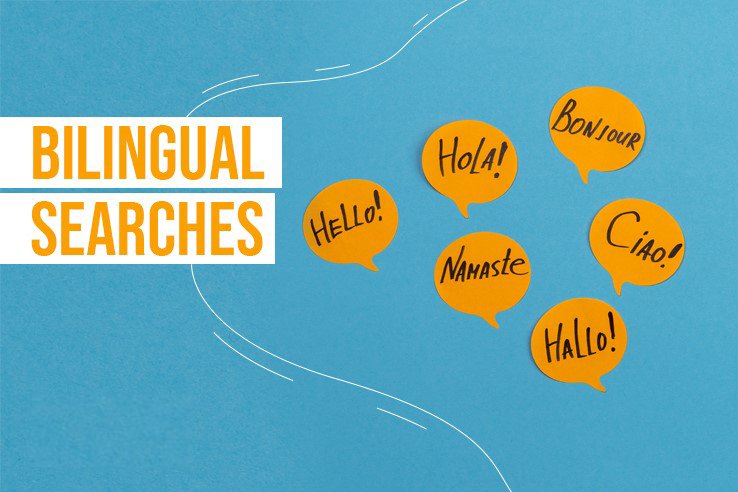SEO is constantly changing in the digital market. If we check its history and current module, growth and expansion SEO is evolved over time. While everybody is attempting to develop a substantial number of links on other websites. SEO is the one skill you need to spend your time on and be attentive in the coming future.
Thus, what is new in SEO in the year 2022? We’ve prepared and analyzed a list of SEO trends that are likely to impact the industry. We’ll cover their features, and what can you can do to capitalize on them.
- Featured Snippets
In Google’s search results, featured snippets are short extracts from a site that are shown to help users find answers to their questions more quickly. The content of featured snippets is automatically gathered from websites that Google has crawled. Definitions, lists, steps, and tables are the most often encountered types of highlighted snippets.
A highlighted snippet is crucial since it represents an extra search engine results page feature that you can control. Featured snippets, which are often seen at the very top of the results page, provide you with higher exposure to searchers and can help you increase brand awareness.
Simply do a standard domain search and choose “Organic Research” from the drop-down menu. Then, on the bottom right-hand side of the page, just click on the “Featured Snippet” link to see it. You may further filter keywords by selecting “Advanced Filters” from the drop-down menu to include highlighted snippets in your search results.
Make your website more visible in highlighted snippets using these steps:
- Conduct keyword research and look for search queries that are in the form of questions.
- Look at results in the “People also ask” box to see what other people are asking.
- Make a concerted effort to rank on the first page of Google’s search results.
- The inverted pyramid style should be used while writing.
- Make use of phrases that are likely to result in featured snippets in search results.
- Optimize your website for voice search
The technique of optimizing your pages for voice searches is called voice search optimization. When you optimize for voice search, you are optimizing the way verbal searches are conducted. Voice search optimization enables a voice search device to read your pages aloud.
If you’re searching for a new strategy to increase website traffic, it’s time to start using voice search. It not only aids in search engine result page (SERP) optimization but also enhances the user experience. One of the most significant ranking indications that Google emphasizes nowadays is, of course, user experience.
Most voice search results (about 75 percent) will appear in the top three of search engine results pages (SERPs). The majority of voice queries are resolved using Rich Answer Boxes that appear at the top of results pages. 30% of Google searches contain featured snippets.
The Following Steps Will Help You Optimize Your Content for Voice Search:
- Keep Your Content information Searchable and scannable.
- Claim your listing on Google’s ‘My Business’ page.
- Refer to the Official User Manuals.
- Pay Special Attention to Long-Tail Keywords.
- Establish Frequently Asked Questions (F.A.Q.) sections.
- Increase the Volume of Your Microdata.
- Recognize the Diverse Ways in Which People Use Voice Search.
Practice these techniques to enhance voice search optimization.
- Add Video Content
Video marketing is an excellent method of enhancing your SEO approach. When implemented properly, it can assist your website in outranking rivals online. Websites that have video content are more likely to appear at the top of Google’s search results. According to studies, 85 percent of marketers utilize video to increase their SEO.
As with blog posts, the title tags and meta description play a significant role in video ranking. Spend time writing an appealing title and description for your video. Conduct keyword research to guarantee you’re targeting relevant keywords. Your internet presence plays a major role here.
Step-by-Step Guide to Video Optimization
- Step 1: Create videos with a purpose in mind.
- Step 2: Create calls to action – and a mechanism for leads to respond.
- Step 3: Implement a lead-collection strategy.
- Step 4: Include critical SEO information.
- Step 5: Analyze your performance and develop future material.
- Adapt to Automation
A.I. and Machine Learning are rapidly infiltrating pre-existing conventional business models, generating concern about the likelihood of a significant change to the corporate world and the system upon which it operates. Due to A.I., the SEO process will become more automated. A.I. enables more accurate data analysis, which enables it to quickly assist in automating complex tasks.
Machine learning is a subset of artificial intelligence that continuously improves its performance and makes predictions or choices without being specifically trained to do so using data.
Seven Steps to Automate Your Content Marketing :
1) Determine the tasks you want to automate.
2) Utilize a content management workflow method.
3) Distribute your material through social media.
4) Pay for content promotion.
5) Automate the distribution of your email newsletter.
6) Construct a connection between several content marketing systems.
7) Determine the effectiveness of your content marketing.
Content Automation is the technique of producing website content automatically via the use of a tool or script. This implies that the website’s material will be generated automatically by a tool and posted on the website.
- Passage Indexing
Google’s passage ranking algorithm incorporates portions of web pages into search results, even if the page itself is about a different subject. Are you curious as to what’s in it for you?
If you publish an in-depth article on a certain subject, the likelihood is that it will rank well.
However, some of it may not be true, since they just cover a portion of it. Google assigns an independent rating to portions of articles through passage indexing. It will have a similar impact on the search engine results page when Google Crawlers begin to comprehend the relevance of certain portions in your material.
Though it is termed Passage Indexing, there is no significant change to Google’s present indexing procedure. The new technology is more concerned with ranking. Thus, if you have long-form material on Off-Page SEO and separate passages discussing each of the off-page SEO tactics, Google will now rank the specific pieces of your content that fit the search query.
Passage indexing is focused on natural language and long-tail search queries. This is expected to favor longer material, such as articles and how-to tutorials.
- Bilingual Searches
As more organizations and marketers expand their operations internationally, multilingual searches are becoming increasingly popular. As the U.S. stated that internationally, English, Spanish, and Mandarin Chinese are the three most widely spoken languages on the planet. In other words, multilingual searches in English and other Languages will become increasingly common.

International businesses that expand their operations to various parts of the world must be prepared to deal with users who search in other languages. In addition to bilingual searches, there will be an increase in the number of languages utilized in search queries.
The English alphabet will be used alongside Latin letters such as French and German, for example, in Western European users’ communications. This implies that search engines will have to adjust their algorithms to accommodate new languages.
- AI-Assisted SEO
AI SEO, sometimes referred to as AI-powered SEO, is a term that refers to the use of Artificial Intelligence to guide the search engine optimization of a web page or website to improve its ranks and organic traffic. Typically, this information is search engine optimized and can be utilized to produce blog posts, tweets, and other promotional materials.

On the retail side, A.I. not only aids in supply chain optimization via predictive analysis but also enhances the consumer experience through improved site performance and personalization. This also has an effect on the searchability of your site and SEO. Making A.I. a necessary component of any contemporary digital marketing plan.
SEO with the assistance of artificial intelligence will also become more significant. Google, Bing, and Yahoo all employ artificial intelligence to comprehend what users are asking and to offer the most relevant results. Google, for example, developed RankBrain, a machine learning and deep learning-based artificial intelligence system. Google utilizes RankBrain to determine which search queries are the most relevant for consumers.
Additionally, Google is investigating AI-assisted SEO to better understand the terms you’re using and to give the most search results.
- Multitask Unified Model
When BERT was released, Google hinted at the possibility of future solutions being more robust.
Google uses BERT to decipher users’ search queries and the material that the search engine indexes. Unlike RankBrain, it does not need an analysis of previous searches to deduce what users mean. BERT comprehends words, sentences, and complete texts in the same way that humans do.
Google released its most recent algorithm upgrade in June 2021. Additionally, it is referred to as M.U.M. When Google releases a new search algorithm known as M.U.M. or Multitask Unified Model, it looks at different types of content and analyses them in different languages to find the best answers to today’s questions.
The Google Multitask Unified Model (M.U.M.) is a new technique for resolving difficult problems that do not have clear solutions. For instance, Google’s research article HyperGrid Transformers: Towards a Single Model for Multiple Tasks discusses a new state-of-the-art in multitask learning that might be included in M.U.M.
- Expertise, Authoritativeness, and Trustworthiness (E.A.T.)
E.A.T. is explained as Expertise, Authority, and Trustworthiness in SEO trends. The notion originates with Google’s Search Quality Rater rules and gained widespread attention after August 2018’s disastrous Medic Update. E-A-T is the prominent factor that Google considers when determining website quality.
Your quality content should strive to maximize user value in the widest sense. Additionally, experts recommend that your website have the appropriate Expertise, Authority, & Trustworthiness – E.A.T. Additionally, you should use a variety of media formats, such as video, audio, and others, to maintain a high level of engagement.
You’ll almost certainly have a better chance of rating high if you stay inside your area of expertise. SEO will almost certainly flourish if you publish quality content that demonstrates the appropriate level of expertise, authority, and trustworthiness. However, what are they in reality? This has to do with what insiders refer to as SQR rules.
- Make Use of Schema Markup
Structured data, or schema markup, is the language of google search, and it uses a unique semantic vocabulary to communicate with them. It is a kind of coding that is intended to supply more precise information to search engines for them to interpret your content.
A schema is a theoretical model or idea that may be used to organize and analyze data. Schemas are helpful because they allow us to make efficient use of the huge amount of data available in our environment.
The header must include some schema markup. That implies you’ll need to manually put the code into your theme file. You risk destroying your website if you do this incorrectly.
- Structured data for richer results for users on SERPs
Structured data enables Google and other search engines to better understand the content of a web page. Structured data not only gives information about a page but also categorizes and organizes the content of that page. Additionally, it permits specific search result features, such as the inclusion of pages in graphical search results.
So what are the benefits of using structured data while creating web pages? Structured data enables the delivery of rich search results from pages or websites, enabling them to appear on search engine results pages (SERPs). This results in increased user attention and, thus, increased C.T.R.s. Additionally, it helps build a site’s domain authority in a certain field while creating a lasting impression on visitors.
Conclusion
It is critical to stay current on new SEO trends in the digital market to ensure sustained development. Recognize that the scope of SEO continues to increase daily and that rising higher in the SERP search results is not easy. Search engine optimization is a difficult but critical aspect of digital presence in today’s competitive environment.
Author Name – Rushik Shah
Author Bio – I Am An Expert In Digital Growth Strategy On A Mission To Help 100,000 Small And Medium Businesses Grow To The Next Level. I have been exploring and writing blogs on the topic of Website Design & Development for Alakmalak. Contact Me To Serve You To Take You To The Next Level.

